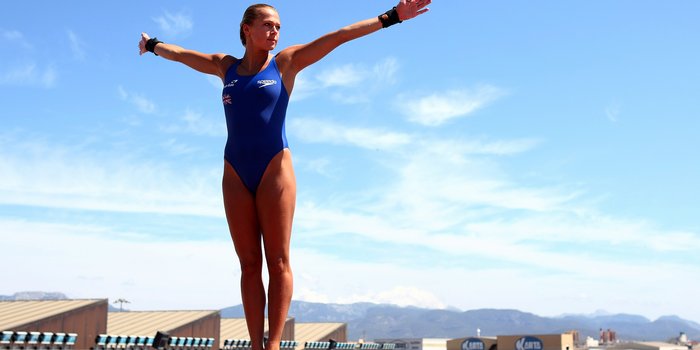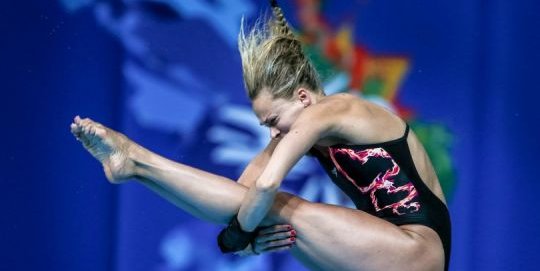Diving is a repetitive acrobatic sport and athletes need to be able to produce force to make enough height and rotation to produce up to four-and-a-half somersaults or twists. They also need to remain healthy from day to day to maximise the volume and impact of their training.
Divers are screened at the start of each season to establish their physical strengths and development needs; these results form the foundation of the work done to produce a robust body. For example, a diver who has limited extension and control of their thoracic spine may be prone to triceps injures – knowing this at the start of the year allows the physio and S&C coach to plan a programme to rectify the issue.
Biomechanics analysis – whether by the coach’s expert eye or by the result of high-speed video analysis can highlight weaknesses in performance that can risk injury; quantifying the error and required fix can lead to work to prevent injury and make the diver more effective.
Tools have been designed to be used from a mobile phone that let the diver inform the team of their health and readiness each day; early access to information about possible illness or injury allows the support team to take all steps necessary to return the diver to health and readiness.



